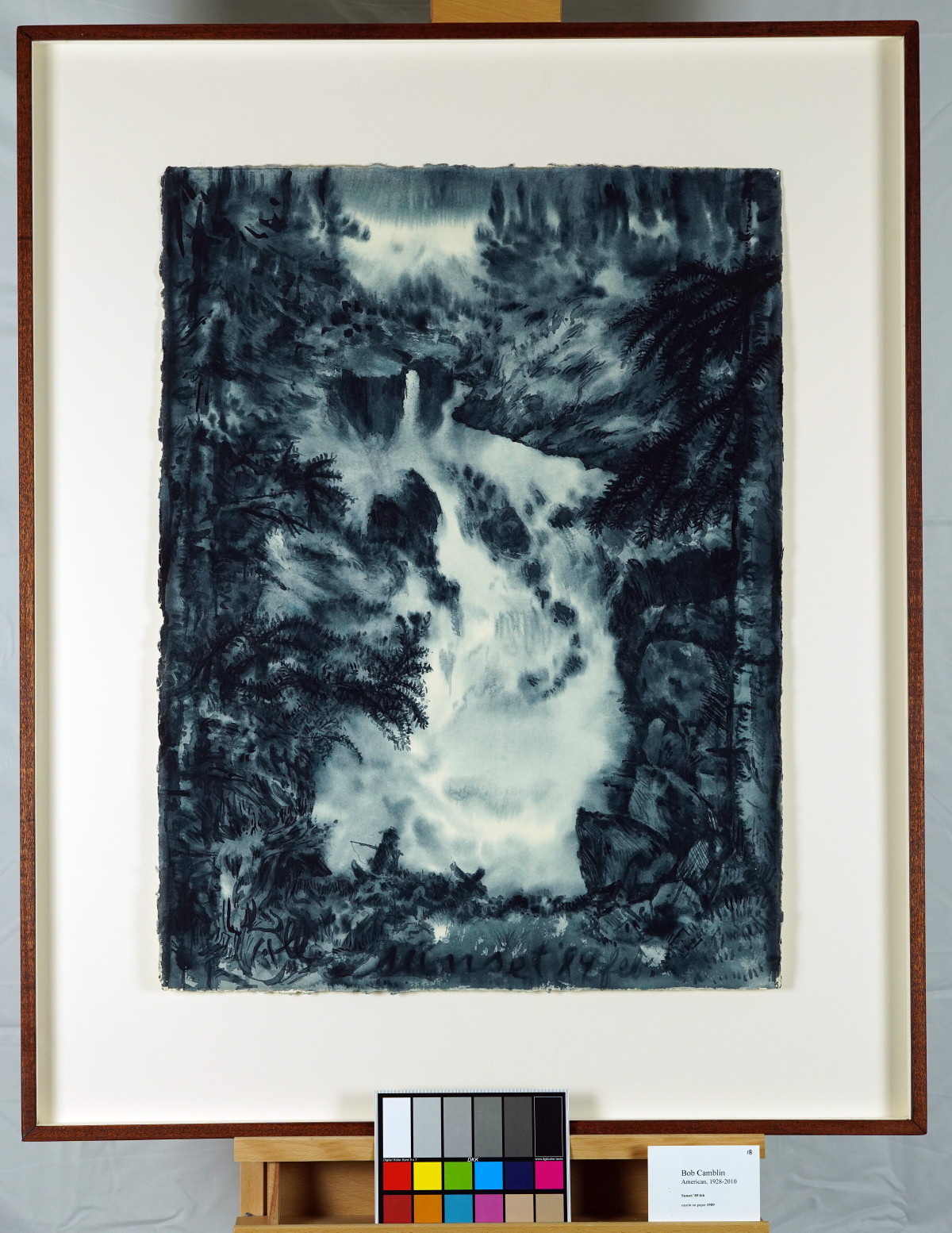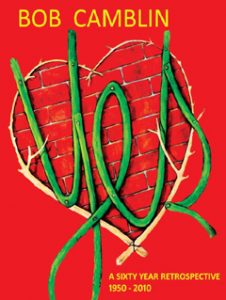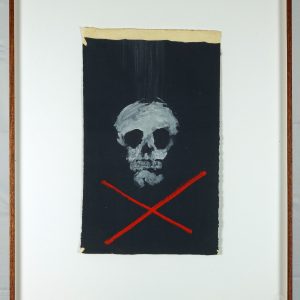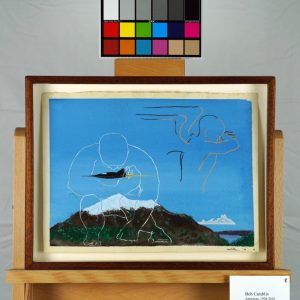Description
Sunset ’89 feb, 1989Casein on Arches
Signed A (what’s the reason for this?)
30 x 25 in. (image)
40.25 x 32.5 x 2 in. (frame)
original, includes certificate of authenticity from ArtTrust
The painting “Sunset ‘89 feb” is a monochromatic depiction of a waterfall nestled in a rugged landscape, with surrounding forest framing the scene. The flow of water dominates the composition, cascading over rocks and creating a sense of movement and energy that focuses on the sage sitting next to the “X” that marks the spot. The use of dark tones and contrasts enhances the dramatic effect, evoking a sense of nature’s raw power.
In Zen philosophy, nature often symbolizes the essence of life, simplicity, and the constant flow of time. The waterfall here can be seen as a metaphor for mindfulness, emphasizing the transient nature of existence. Just as water continuously moves and reshapes itself, the Zen approach to life involves embracing change and finding serenity in the present moment, regardless of life’s turbulent currents.
Drawing from the I Ching, the image might be associated with the hexagram “Kan” (The Abysmal Water), which represents danger and the need to exercise caution. In this context, the waterfall could signify a time of trial or challenges that one must navigate with resilience and clear intention. It suggests that just like water, one should adapt and find the path of least resistance to overcome obstacles.
Combining the Zen and I Ching interpretations, the waterfall serves as a potent symbol of life’s constant flow, embodying both its challenges and beauty. The artwork invites the viewer to contemplate the idea of going with the flow while being mindful of life’s inherent dangers. It suggests that peace can be found not by avoiding life’s struggles, but by navigating them with grace, much like water moves around stones.
Waterfalls have been a popular subject in art history, often symbolizing the sublime, a concept that evokes awe and sometimes fear. The technique used here—monochromatic tones with high contrast—harks back to traditional Chinese landscape paintings, where waterfalls represent the dynamic forces of nature. The piece also bears resemblance to works from the Romantic era, where artists depicted nature as a powerful and overwhelming force. By using a limited palette, the artist emphasizes form and movement, allowing the viewer to focus on the emotional impact of the scene rather than getting lost in color details.
This artwork encapsulates the interplay between nature’s chaotic power and its serene beauty, offering multiple layers of interpretation for viewers to explore.
*Shipping cost will vary, please inquire at sales@camblingallery.com before purchasing.
Currently ships from Oregon, USA
Member of artnet? Apply for a discount! Inquire about intergallery and permanent loans for museums.
“Sunset ’89 feb” was featured in his Yes Retrospective and in volume IV of the series Bob Camblin N Compleat Workes.
Reproductions of this drawing are available in multiple sizes!
Click here to use our high-resolution viewer!
This artwork is available with a non-fungible token to ensure traceability and transparency of provenance.
The royalty factor – Unlike traditional artworks, such as paintings, mosaics, statues, and the like, NFTs can be programmed to provide royalties to you every time the painting (and token) is sold and resold – for eternity. That mind-bending Camblin you sold could be worth millions one day and provide income for your great-great-great grandkids!
Anti-forgery – The central idea underpinning NFTs is that they are built on the blockchain, which is meant to offer advanced security. Think of it like an un-erasable and un-avoidable copyright.
Easy authentication – Another compelling aspect of NFT art and NFTs in general is the ability to quickly and easily authenticate items, as the record of ownership is scrupulously kept on the blockchain.






